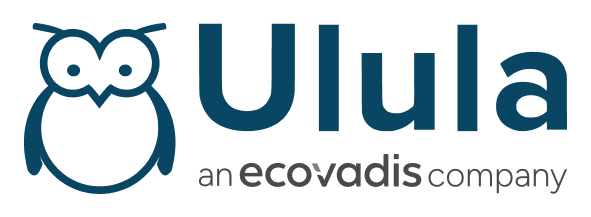The International Labour Organisation’s (ILO) latest Profits and Poverty report has revealed that global profits from forced labor have reached €236bn, a 37% rise since the last iteration of the report in 2014. This €236bn figure signifies what workers should have been paid, were they not suffering under conditions of unpaid and indentured labor.

Source: United Nations
The eye-watering total is the same as the GDP of Latvia and Croatia, and more than the annual revenue of Microsoft. No region in the world is spared from forced labor, and nine out of ten incidents of forced labor occur in the private sector, so it follows that being complicit in forced labor is a risk for any company, no matter where they do business.
In the absence of actions that can change economic reality, these profits create incentives in the supply chain labor market to continue abusive practices. Regulations in Europe like the CSDDD, and those on the horizon elsewhere, along with a will to drive change from global businesses, and the right due diligence policies and tools, can turn this around. The CSDDD, for example, can impose penalties of up to 5% of global turnover for non-compliance with supply chain human rights laws.
It’s time to ensure the swift implementation of compliant human rights due diligence (HRDD) and make forced labor bad for business.
The industries driving forced labor profits
With the numbers of forced labor victims and the resultant profits growing, vigilance is more important than ever for businesses to ensure the products they sell aren’t made with forced labor. This is especially true as far-reaching regulations come into effect that could lead to harsh consequences for companies implicated in forced labor. Worker-voice and human rights due diligence (HRDD) tools are the best way to get far-reaching and meaningful visibility over forced labor risks, ensuring the most vulnerable workers are protected.
The industries where the most profits from forced labor are found are as follows;

Vulnerable workers are also the most hidden
With a significant amount of forced labor occurring within the private sector and globally linked economic sectors, there is a strong role to play for businesses in fighting back. For businesses to establish strong policies that can root out these practices and ensure that they are penalized rather than profitable, they need to put the following in place;
- Strong HRDD policies and practices in line with the UN Guiding Principles.
- Carry out a HRDD risk assessment.
- Engage with suppliers to carry out worker surveys to identify risks.
- Put in place a functioning complaints system so that workers can highlight risks anonymously, in real-time.
- Put processes in place to report on their progress over time.

In 2021 the ILO estimated that there were 27.6m people suffering in conditions of forced labor globally.
In 2021 the ILO estimated that there were 27.6m people suffering in conditions of forced labor globally. While the problem is ubiquitous, and generates big business, there is a challenge in reaching exploited workers suffering from forced labor deep in the supply chain. Reaching them means providing them with anonymous whistleblower possibilities, or helping them to understand and use official channels to fight for their labor rights and ensure malpractice is rooted out.
To meet these challenges, the ILO Profits and poverty report calls for extending labor-inspections into high-risk areas. A digital HRDD risk assessment survey, delivered to workers on their own devices, provides for unfiltered feedback on forced labor risk indicators from the workers that have their feet on the ground where risks are likely to occur.
A digital worker-voice survey carried out by the International Research Centre on Women, ICRW, Ulula, and partners, reached 1,813 workers in factories in Vietnam and China, the majority of whom were women. The capability to address women directly is key, given recent World Bank figures suggesting the global gender pay gap is bigger than ever. These surveys allow for specific insights into the real issues workers face, in this case, that workers had confidence in the processes established to counter gender-based violence in the workplace, but that they did not feel support for parents was adequate.
Ulula also worked with a leading cosmetics brand to collect ongoing feedback from their supply chain workers, carrying out over 100 assessments to date and securing an 80% engagement rate on the following indicators;
- Workplace satisfaction
- Contract terms and remuneration
- Abuse and harassment
- Hours, overtime and leave
- Freedom of movement
- Grievance reporting and HR processes
Risk identification: anonymous worker-feedback is the way forward
One of the biggest challenges facing companies looking to take action against forced labor risks is that the old standard policies, which usually consist of a grievance phone-line or a suggestion box, don’t always penetrate deep enough to identify hidden risks. Although in-person audits are essential, they only provide a one-off snapshot of how conditions are in a given workplace.

Anonymous worker-feedback is the way forward
Ulula’s surveys are designed for continuous feedback, filling in the blanks of the overall risk picture, and enabling a larger sample size. Crucially, they’re anonymous. Workers can access them from their own devices, anytime, and anywhere, allowing them to say what they see without fear of persecution, whenever they’re ready to do so. These surveys are designed with accessibility in mind, deployed in any language, and can be tailored to work on whatever the worker’s device or preferred method of engagement is.
One feature that’s not possible with traditional approaches to forced labor is the possibility of constant two-way dialogue. Ulula’s anonymous complaints mechanism functions like a text chat, except that it auto-translates too, allowing for transparent conversations with migrant workers who may not speak the same language as their case manager. Businesses looking out for specific risks, such as forced labor, can also benefit from the platform’s built in early-warning system functionality.
The Speak for Change programme, in partnership with amfori, is one example of how a modern digital complaints mechanism works in practice; through this programme partners were able to identify that of the complaints received;
- 80% were submitted directly by workers
- 31% were related to decent working hours
- 23% were related to fair remuneration
- 15% were related to occupational health and safety
The results from Ulula’s own anonymised and aggregated Worker Voice Report reflected these findings, showing that reimbursement, wages & benefits, labor rights, health and safety and unethical behavior were the most common complaints received.
Enabling compliance and disincentivizing forced labor with Ulula
Ulula has experience in engaging vulnerable workers across each of the sectors where prevalent forced labor risks have been identified. In industry, Ulula worked with stakeholders to deploy a digital platform to advance worker’s rights in relation to the Qatar FIFA World Cup. There are also tailored solutions for the textiles and garment sector, and the agricultural sector.

Ulula’s anonymous complaints mechanism functions like a text chat
Given the majority of profits from forced labor are to be found in Europe, businesses should be attentive to mandatory due diligence laws such as the CSDDD, the CSRD and the EU Forced Labor Regulation. These laws pose significant penalties, including the withdrawal or banning of products, and fines, should any companies trading in the EU be found to be associated with forced labor.
These regulations also place a significant reporting burden on companies. In order to comply with the CSRD, companies will need the kind of detailed data on forced labor indicators and other HRDD risks that can be unearthed through Ulula’s tools. It’s not just in Europe where mandatory HRDD rules are on the rise. The US, and major East Asian markets, are moving to tighten the net around goods associated with forced labor. Implementing a modern, digital risk assessment, survey and complaints procedure is becoming the global standard for doing business the right way, and the results from the ILO Profits and poverty report are a reminder that there’s no time to waste. The time for implementation is now.
Technological developments mean that the tools to fight against forced labor are developing fast. To get actionable data on forced labor risks from the most vulnerable workers in your supply chain, end the cycle of profit from poverty, and lead the fight back against forced labor, get in touch.


